Bait hive - fail
The year continues to be unseasonably cool, with daytime maximum temperatures being at least a couple of degrees (ºC) below the thirty year average for this region. Nevertheless, colonies are building up reasonably well and some are starting to make preparations to swarm – drone brood levels are rising, the number of ‘play cups’ are increasing and one or two had queen cells at the last inspection.
Bait hives deployed
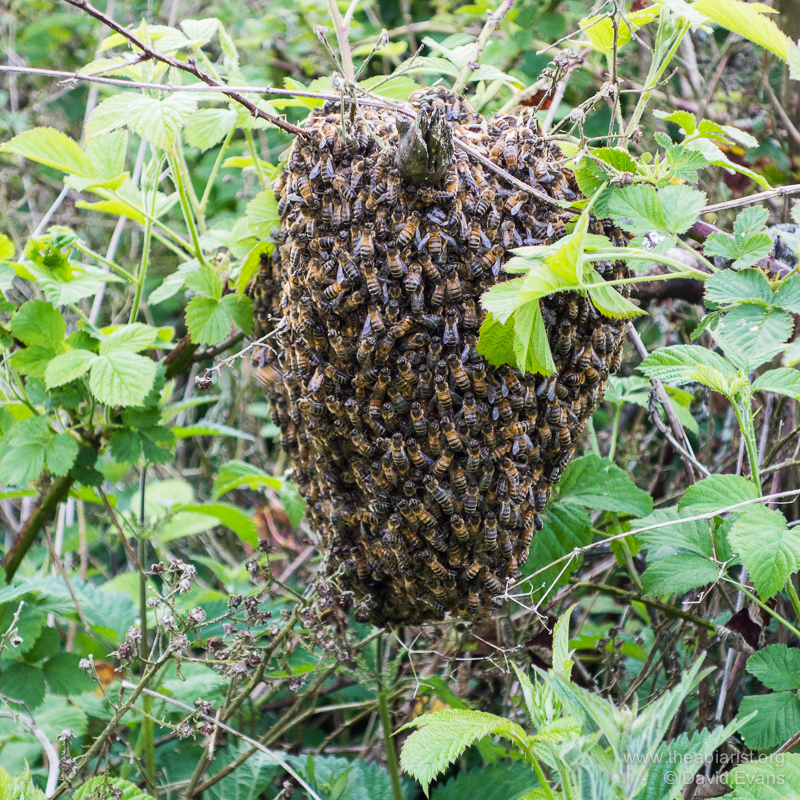
Swarm
In the hope that the temperature will increase and that swarming will occur I always put a few bait hives out in likely locations, including odd corners of my apiaries. Although my queens are all clipped and marked (I think) there’s one I’ve yet to spot this year and she just might have been superseded late last season. Clipping doesn’t stop swarming, but it stops the queen and the prime swarm disappearing over the fence to someone else’s bait hive or, worse, chimney. However, there’s a high density of beekeepers in this area and – going by the number of swarms and successful bait hives in previous seasons – some don’t practise effective swarm control. Last season I caught four swarms, though one was little more than a tiny cast, in bait hives.
Swarmtastic
I always have a bait hive in my garden. The sight of a swarm arriving is one of the truly great experiences in beekeeping and I’m far more likely to witness it there than the corner of a field. A day or two in advance the scout bees check the hive, repeatedly visiting in increasing numbers. They fly around the entrance, going in and out to determine the size of the cavity, then flying round and round the hive checking suitability. Many dozens can appear, standing around on the landing board (if there is one) seemingly discussing whether it is a ‘des res‘. They then disappear altogether. This is either because they’ve chosen a different site (other scout bees have been checking different locations and, as Tom Seeley describes in Honeybee democracy, they reach a consensus for the swarm) or because they’re busy leading the swarm to your bait hive.
Suddenly the sky fills with a whirling mass of bees that descend in a seemingly chaotic yet organised manner to the bait hive, ‘bearding’ at the entrance and gradually entering. This can take an hour or two and is a fantastic sight.
Epic fail
Although I’d seen no scout bees I periodically check all of my bait hives. I also top up the lemongrass oil, adding a couple of drops to the top bar of a frame. The bait hive in the corner of the garden was occupied … by a wasps nest attached to the starter strip in a foundationless frame.
- Squatters
- Beautiful
- Future trouble
Despite the beautiful architecture and the presence of a dozen or so wriggling larvae, they had to go. In late August this lot, or their progeny, would be terrorising my mini-nucs containing late-mating queens, robbing out weak colonies and causing a general nuisance during the honey harvest.
And the hawthorn is flowering …
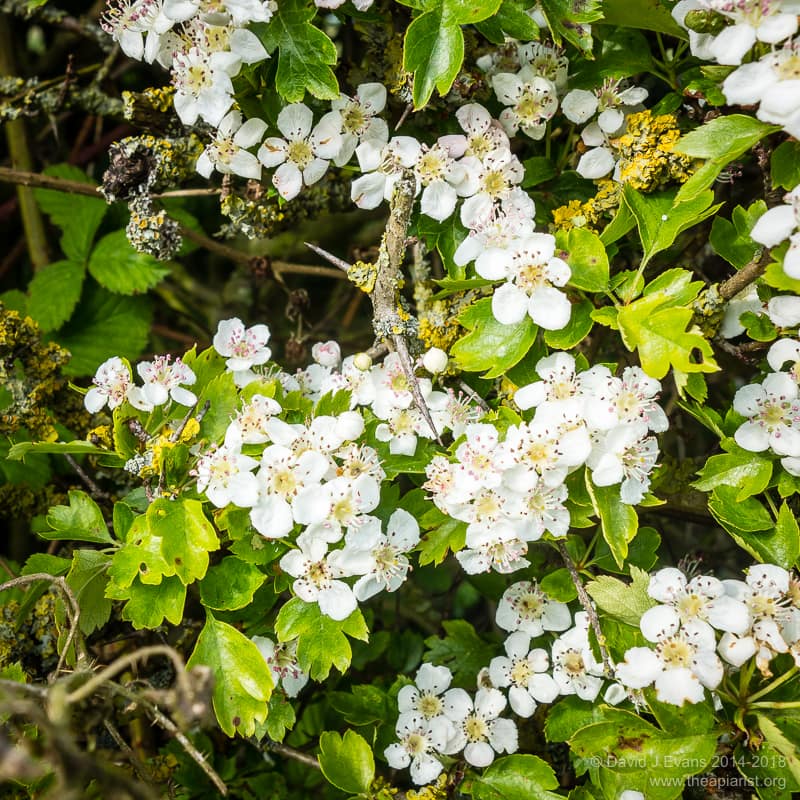
Hawthorn
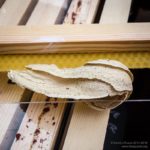
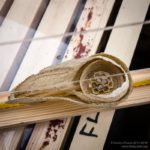
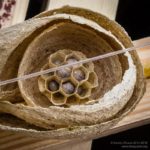
Join the discussion ...